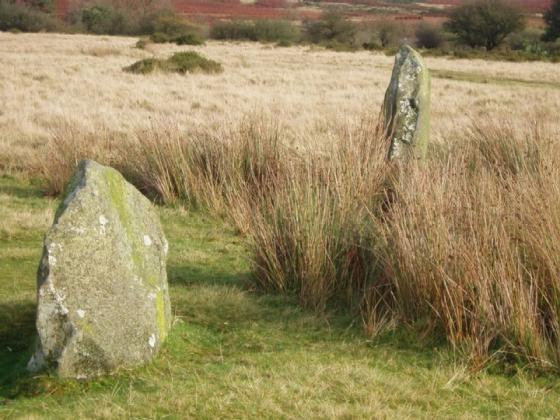
From Edward Pugh’s ‘Cambria Depicta’ (1816).

From Edward Pugh’s ‘Cambria Depicta’ (1816).

As seen from Cefn y Castell, the next hill fort over.

Beautiful star-shaped faience bead from Breiddin Hill Camp, on display in the National Museum of Wales.

Looking towards Breiddin Hill across the New Pieces enclosure (slightly below to right) ascending Middletown Hill. Rodney’s Pillar would appear aptly named. Plonker.

Breiddin Hill Camp viewed from the (apparently) much superior Cefyn y Castell, Middletown Hill. The ‘New Pieces’ enclosure lies b’twixt the two.

The volcanic Breiddins, seen from the bank of Afon Hafren to the SW.

Seen from the west, the naturally steep hillside rising almost vertically from the floodplain below is a formidable sight.

Breiddin Hill from Offa’s Dyke Path to the northwest.

Taken 25th July 2003: From right to left, the peaks of Moel y Golfa, New Pieces and Breiddin Hill, as viewed from just south of Trewern.
Wild Humphrey Kynaston, a younger son of the Kynastons of Myddle Castle, who was outlawed apparently for murder, possibly for debt also, in 1491, [took refuge in the cave in Nesscliff Hill] in the Marches beyond the reach of English law. Once when he had crossed the Severn the Sheriff’s officers followed him, and removed some of the planks from Montford Bridge to cut off his escape; but he put his faithful horse to the leap and landed safely on the further side, where the King’s writ did not run. The wonderful leap was long kept in memory by marks dug in the turf on Knockin Heath, and popular tradition now tells of “Kynaston’s Leap” over the Severn, from Nesscliff Hill to Ellesmere, or even to the top of the Breidden Hill.
From Charlotte S Burne’s article in ‘Memorials of Old Shropshire’ by Thomas Auden, 1906.
“The Breiddin Hillfort: A later prehistoric settlement in the Welsh Marches” – a CBA Research Report by C R Musson with W J Britnell and A G Smith, from 1991.
The umpteen finds are meticulously recorded and illustrated – and there are some unusual wooden ones which were preserved in a marshy area in the centre of the fort.










































